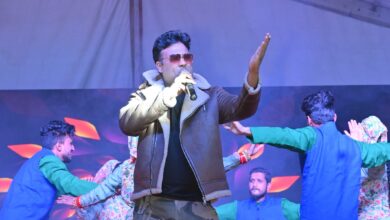What is the cause of twitching of limbs (dystonia)?

It is actually a disease related to the nervous system, due to which muscle contractions, Muscles become uncontrollable due to repetitive movements such as cramps, When the matter becomes serious, unusual and strange postures start forming. In medical science it is called dystonia. It has different effects on the parts of the body and the symptoms also emerge accordingly. When it affects the whole body, tremors and serious problems related to the nervous system occur.
The twitching of the eyes, arms or other parts of the body is seen in our society as auspicious and inauspicious, it is not known how much auspiciousness is there, but their constant twitching is inauspicious from the point of view of health. This is actually a disease related to the nervous system, due to which the muscles become uncontrolled due to repetitive movements like muscle contractions, cramps. When the matter becomes serious, unusual and strange postures start forming. In medical science, it is called dystonia, it has different effects on the body parts and symptoms also emerge accordingly. When it affects the whole body, tremors and serious problems related to the nervous system occur.
This disease can occur at any age, if not treated in time, symptoms like cramps and contractions become very painful. Symptoms worsen with fatigue or stress during prolonged periods of the same activity (eg writing, typing) or become more severe over time. In some cases, dystonia is genetic that is passed down from parents to children. In some it is caused by environmental factors, such as brain damage from lack of oxygen, exposure to toxins or overuse of a drug.
What symptoms emerge?
Symptoms vary according to body parts, usually leg cramps, dragging legs, impaired handwriting when writing a few lines, difficulty speaking, involuntary stretching of the neck, repeated muscle contractions that last for a few seconds or minutes. Lasts etc. In severe cases, muscle contractions, twitches, and cramps last for weeks or months.
Cervical Dystonia: It affects the muscles of the neck, its symptoms include drooping of the chin to the shoulder (torticollis), tilting of the head back and forth or sideways, moving the head forward or backward on the shoulders, tremors in the hands. These symptoms are triggered by prolonged sitting in one position or posture, which are worsened by stress or stimulation such as cervical spine arthritis, nerve root compression and narrowing of the spinal cord in the neck.
Blepharospasm: This dystonia affects the muscles around the eyes, causing eyelid twitching, involuntary blinking, facial muscle movements, and facial twitching sensations that can become chronic in severe cases. If symptoms of blepharospasm last more than a week, seek medical advice.
Dopa-responsive dystonia: It starts in childhood. It gets its name from its treatment because the drug used in its treatment is called levadopa, which controls the production of dopamine in the brain by increasing it. It begins in childhood by the age of 6 and causes the legs to curl inwards or upwards, muscle contractions – tremors and uncontrolled movement in the legs; by adolescence, symptoms move to the arms and then to the whole body This leads to abnormal limb position and lack of coordination while walking or running.
Generalized Dystonia: It begins in childhood or adolescence and affects muscle groups in different parts of the body. It usually starts in the trunk or limbs. The main symptoms are twitching of the leg as the first sign, difficulty in coordinating or controlling body movements, twitching in the trunk or limbs, general or painful spasms in the muscles, abnormal gait, rapid, rhythmic movements that cause certain movements of the body. Parts may remain in abnormal position etc.
Hemifacial Spasm: In this, there is a feeling of spasm and stretch in the muscles on one side of the face, which makes the person uncomfortable.
Laryngeal (larynx) dystonia: In this, the quality of voice deteriorates due to hoarseness due to spasm in the voice box (larynx), in severe cases the person is unable to speak.
Oromandibular dystonia: In this, the sufferer has to repeatedly open and close his jaw or stick out the tongue, suffering from spasms in the muscles of the mouth, tongue and jaw.
Task-specific dystonia: Writers, musicians, typists and golfers suffer more from this, in which the person is unable to do any work due to painful cramps in the hands and wrists.
Paroxysmal dystonia: In this, like a seizure, tremors, pain and twitching arise in the whole body, one limb or face, but the person does not lose sensation. This tour may last a few minutes or several hours. Triggered by stress, fatigue, coffee or alcohol consumption, and sudden body movements, this dystonia usually begins in adolescence.
Doctors use different methods to determine the type of dystonia. This includes age, onset and whether it worsens, remains constant, or improves over time, with a specific focus on the parts of the body affected by dystonia. What time of day or what activity triggered it, whether the symptoms were the same or different in all situations. The etiology also looks at the underlying neurological damage, genetic and environmental influences in the body.
Why does dystonia happen?
It results from genetic or environmental factors, inherited genetic changes that are present from birth. Different genetic factors affect the balance of chemicals in a way that leads to different types of dystonia. Environmental factors and health conditions that trigger dystonia include lack of oxygen or bleeding in the brain, side effects of medications (such as antipsychotics, dopamine agonists), exposure to heavy metals or carbon monoxide, brain tumors, encephalitis infection, brain stroke , brain or spinal cord injury, Wilson’s disease, basal ganglia are prominent.
confirmation how?
Dystonia is confirmed by asking the person for symptoms and with physical tests such as blood and urine tests to check for toxins and infections, MRI scans to detect tumors, levodopa treatment, and genetic testing.
What’s the cure?
Its treatment is based on the cause and type, currently there is no permanent cure, but some medicines help to calm the symptoms such as-
Botulinum Toxin (Botox) Injection: It blocks the release of acetylcholine, the neurotransmitter responsible for muscle contraction.
Dopaminergic Agents: They increase or decrease the level of a neurotransmitter called dopamine in the brain, which plays an important role in muscle movement.
Anticholinergics: It blocks the release of a chemical called acetylcholine.
Some other muscle relaxants, such as diazepam (Valium), modulate the neurotransmitter GABA, but they keep a person drowsy.
Physiotherapy: This allows a person to manage their postures, which helps to calm the symptoms of some types of dystonia such as speech therapy. If the sufferer has a good knowledge of dystonia then he can easily handle it and increase the quality of his life.
Surgery: If the usual methods of treatment do not help, doctors perform surgery, usually with selective peripheral denervation, in the treatment of cervical dystonia. In this, the end of the nerve of the neck is cut off which is attached to the muscles.
Deep brain simulation: In this, surgeons block abnormal nerve impulses produced by the basal ganglia by sending signals from pulse generators to tiny electrodes in the basal ganglia and under the skin in the chest, thereby reducing unwanted muscle movements.
attitude
Dystonia is a disorder associated with muscle movement that affects people of different ages in different ways, depending on the parts of the body. Remember that there is no exact medicine for this, but currently available medicines can control its symptoms to some extent. Physiotherapy is more effective than medicines. To avoid this trigger, do not sit in one position for more than 45 minutes, get up and walk, do not let the body become dehydrated because the lack of electrolytes in the body makes the movement of muscles uncontrollable.





